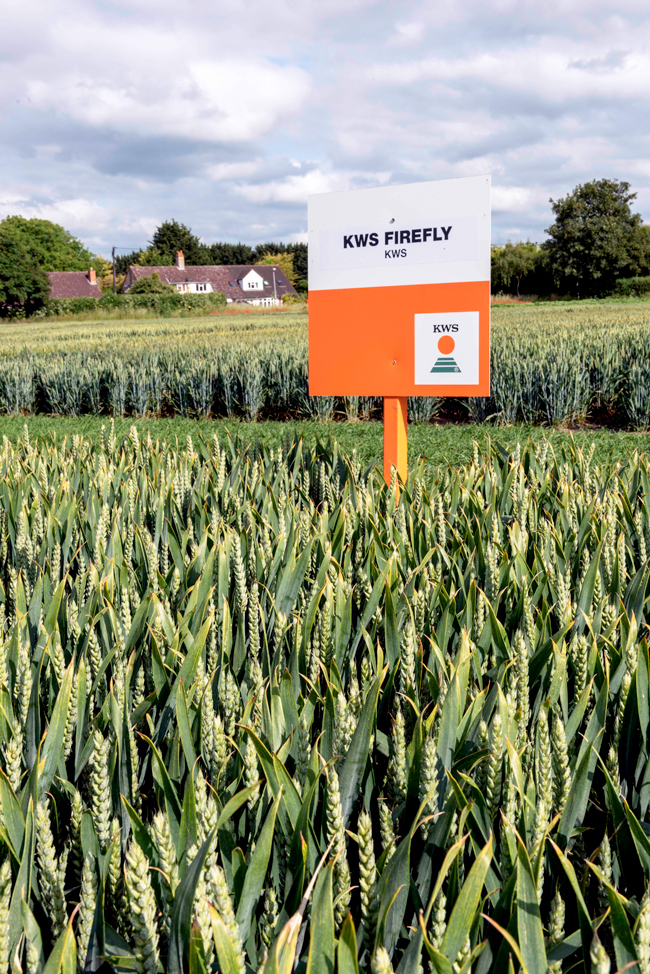New wheat varieties offer agronomic value
7th March 2019
As well as offering winter wheat varieties that combine good yield and marketability, plant breeder KWS reckons that the new generation of varieties must also deliver ‘agronomic value’ if growers are to face up to the challenges and uncertainties of the future.

Group 3 KWS Firefly
As well as offering winter wheat varieties that combine good yield and marketability, plant breeder KWS reckons that the new generation of varieties must also deliver ‘agronomic value’ if growers are to face up to the challenges and uncertainties of the future.
Particularly important, says the company, is the ability for varieties to deliver profitability in an era where there is less chemistry available to control key yield robbing, and difficult to control disease, septoria.
To this end, KWS has officially launched two of its winter wheat varieties with the promise of delivering exactly that.
Speaking at an event in Cambridgeshire recently, KWS product development manager John Miles said that the company’s newly recommended Group 2 variety, KWS Extase has good all-round disease resistance, with a List-topping 8.1 rating for septoria as well as “unrivalled” untreated yield at 95 per cent of treated controls –7 per cent ahead of the next best variety, Graham.
This, said Mr Miles, was following three years of National List trials for Extase, each of which had been challenging in their own right; particularly from septoria pressure in 2015, yellow rust in 2016 and brown rust in 2017.
Mr Miles said that Extase would appeal to growers in the East close to quality end-markets, and particularly those with large farms with stretched capacity where its robust disease resistance would buy them time.
“Its combination of high septoria resistance and high grain spec is unique and will appeal to growers in the East and South looking for a quality variety,” he commented.
“Its fast speed of development is also beneficial to growers drilling later for black-grass control, while good stem stiffness and earliness to mature are additional advantages,” he added.
New Group 3
KWS wheat breeder Mark Dodds said that the company’s new biscuit quality variety KWS Firefly is the highest yielding in Group 3 across the UK at 102 per cent. It also comes with the highest Hagberg Falling Number in the Group (248), a decent specific weight (75.9kg/hl) and has full uks (export quality) accreditation, he commented.
“Agronomics-wise it has a good package; and very good when it comes to septoria (7), brown rust (8) and yellow rust (9).
“It also has resistance to orange wheat blossom midge which is an important factor with less chemistry available,” Mr Dodds added.
Short and stiff, he said that Firefly is well suited for growers in the West where it has excellent yield potential in combination with its septoria rating and a high HFN.
However, with 73 per cent of Group 3 plantings based in the AHDB’s East region, it is a very important part of the country for biscuit wheat production, he said.
Here, Firefly has a 2 per cent yield advantage over Barrel and Elicit, the highest septoria rating in the Group, useful OWBM resistance and yields close to Group 4 Gravity, but with premium potential, pointed out Mr Dodds.
KWS Extase is expected to take 3.5 per cent of the Certified seed market this autumn and Firefly 4.5 per cent.
